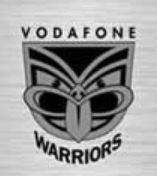Content
The assertion of existence applies to all assets or liabilities included in a financial statement. The Financial Accounting Standards Board (FASB) establishes accounting standards in the United States. These are regulations that companies must follow when preparing their financial statements. The FASB requires publicly traded companies to prepare financial statements following the Generally Accepted Accounting Principles (GAAP).
Bank deposits may also be examined for existence by looking at corresponding bank statements and bank reconciliations. All transactions and events that have been recorded have occurred and pertain to the entity. John Cromwell specializes in financial, legal and small business issues. Cromwell holds a bachelor’s and master’s degree in accounting, as well as a Juris Doctor. 11/ AU sec. 329, Substantive Analytical Procedures, establishes requirements on performing analytical procedures as substantive procedures. Transaction level assertions are made in relation to classes of transactions, such as revenues, expenses, dividend payments, etc.
Four Covid-19 Internal Audit Risks to consider before the Final Audit
Exhibit 7-2 summarizes the relationship between management assertions and general audit objectives for a financial statement audit. Auditors for these companies perform procedures to test the validity of management’s assertions and to provide an independent opinion. While audit procedures do not provide absolute assurance, an audit is designed to provide readers of financial statements with reasonable assurance an entity’s financial statements fairly present its financial position in all material respects. In summation, assertions are claims made by members of management regarding certain aspects of a business.
Also, the auditor may ask for third-party verification of the balance as of the said date. IFRS developed ISA315, which includes categories and examples of assertions that may be used to test financial records. Clearly, materiality plays a large role; however, how to measure what information is true and fair or misstated is crucially important. For example, an auditor may want to examine payroll records to make sure that all salaries and wages expenses have been recorded in the proper period. This may include an examination of payroll records, a payroll journal, an active employee list, and any payroll accruals that were made and reversed in the period being examined.
Auditing: Management Assertions
If you are planning for an upcoming attestation, whether it be a SOC 1 Audit, SOC 2 Audit, HIPAA Audit, or HITRUST Audit, or if you have additional questions about our Audit Process, and would like to retain the services of Linford & Co, please contact us. Hopefully, this will help answer the questions you have and help clarify your understanding. 12/ If misstatements are identified in the selected items, see paragraphs and paragraphs of Auditing Standard No. 14.
Isaac enjoys helping his clients understand and simplify their compliance activities. He is attentive to his clients’ needs and works meticulously to ensure that each examination and report meets professional standards. Type 1 audits cover the same areas; however, the auditor’s opinion only addresses the suitability of the design of controls at bookkeeping for startups a point in time. There is no assurance that controls were operating effectively over a period of time. For additional information, check out our blog on SOC Report Types (1 vs 2). However, knowing what these assertions are and what an auditor will be looking for during the audit process can go a long way toward being better prepared for one.
Management assertions are implied or expressed representations
One reason for not proceeding with an audit is that the inability to obtain a management assertions letter could be an indicator that management has engaged in fraud in producing the financial statements. The goal for companies making such assertions is to minimize (or, ideally, avoid) the risk of material misstatement by failing to provide financial data that is, in fact, complete and accurate. A service organization can greatly reduce the number of resources expended to meet user auditors’ requests by having a Type II SOC 1 audit performed. When a company’s financial statements are audited, the principal element an auditor reviews is the reliability of the financial statement assertions. While not directly subject to SOX, many non-public companies have been indirectly impacted because they provide services for publicly traded companies. A service organization with a number of public clients or user organizations could be inundated with audit requests by user auditors attempting to audit their process to gain comfort on their customers’ assertions over internal controls.
- This is the assertion that all appropriate information and disclosures are included in a company’s statements and all the information presented in the statements is fair and easy to understand.
- The assertion of existence is the assertion that the assets, liabilities, and shareholder equity balances appearing on a company’s financial statements exist as stated at the end of the accounting period that the financial statement covers.
- Cromwell holds a bachelor’s and master’s degree in accounting, as well as a Juris Doctor.
- Auditors will employ a wide variety of procedures to test a company’s financial statements with respect to each of these assertions.
- Independent auditors use these representations as the foundation from which they design and perform procedures to test management’s assertions and form an opinion to which they attest to the public.
- Management assertions are implied or expressed representations
by management about classes of assertions and related accounts and
disclosure in the financial statements.
1) The auditors use the management assertions to check the completeness and accuracy by evaluating the accounting transactions. Many professionals review and test the authenticity of this assertion by using certain checklists. This helps ensure that the financial statements in question comply with accounting standards and regulations. The assertion of accuracy and valuation is the statement that all figures presented in a financial statement are accurate and based on the proper valuation of assets, liabilities, and equity balances.
Rights and Obligations
Audit tests developed for an audit client are documented in an audit program. This standard explains what constitutes audit evidence and establishes requirements regarding designing and performing audit procedures to obtain sufficient appropriate audit evidence. That’s because there is no other way to hold the preparers of financial statements accountable.
While the audit opinion communicates the auditor’s assessment and provides assurance on the financial statements, management assertions reflect the accountability of management in ensuring the accuracy and completeness of the financial information. Both the audit opinion and management assertions contribute to the reliability and transparency of financial reporting, providing stakeholders with confidence in the financial statements. Financial statement assertions are claims made by companies that attest that the information on their financial statements is true and accurate. Information related to the assertions is found on corporate balance sheets, income statements, and cash flow statements. There are five assertions, including accuracy and valuation, existence, completeness, rights and obligations, and presentation and disclosure. Company executives are required to make assertions or claims to the public regarding certain aspects of a business.





































